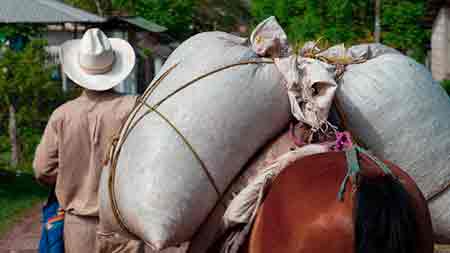
Our job as coffee merchants is to tell the story of the grower, and this brief account of the life of a coffee farmer in Honduras is straight from the source …
Coffee growers have always used solar energy to dry coffee via the age-old tradition of “sun-drying” the green beans on a cement patio, which is arguably the most environmentally friendly option for drying coffee; however, this highly manual method comes with a number of costs and limitations.
Sun Dried Coffee: Spreading the coffee beans out to dry on a large cement patio is the sun-drying tradition, but it requires a lot of time, energy, and space. Sun dried coffee must be done in relatively small batches and takes 5-15 days for the beans to dry properly, depending on cloud cover and rain. Since sun dried coffee stays moist for up to 2 weeks, the risk of mold development is much greater. The beans must be carefully managed and turned using rakes, otherwise they will not dry uniformly and this leads to defects in the resulting coffee.
Solar Dried Coffee: Solar dried coffee, on the other hand, harvests the sun’s energy with solar panels and uses that clean energy to power a high-efficiency mechanical dryer; which works like a convection oven. In this way, solar dried coffee is free from the costs and limitations associated with the sun-drying method:
Source: Information collected and summarized by Merchants of Green Coffee Inc. from our own corporate documents, in addition to those of our partners; Mesoamerican Development Institute (MDI).